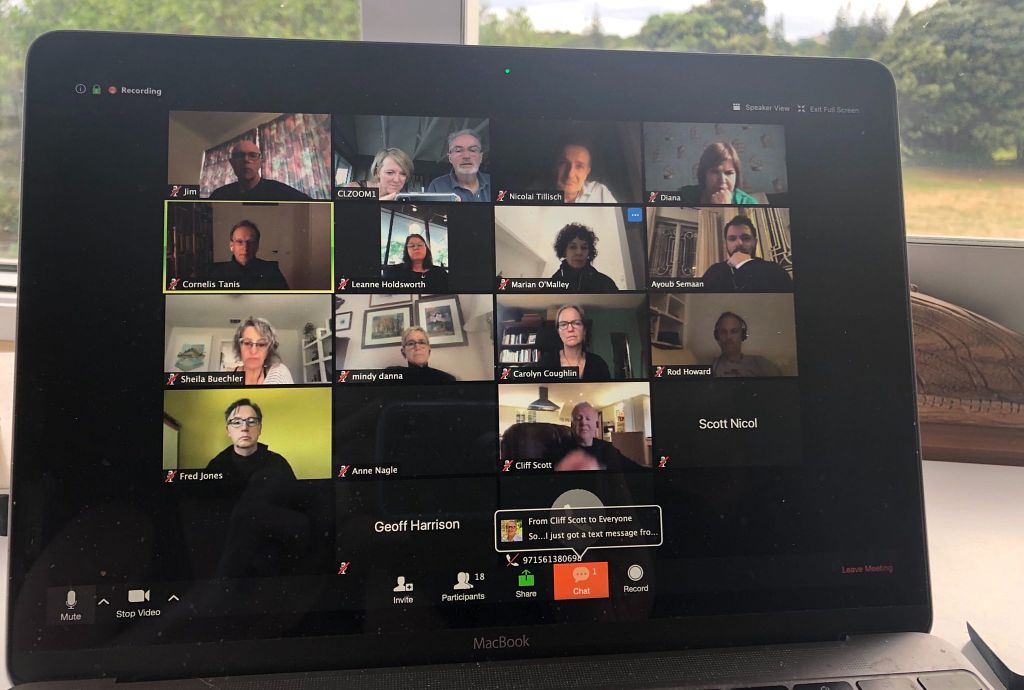Keeping close while we keep our distance: Six ingredients to staying connected and creative in a virtual world

The headlines are more alarming each day, but the news is basically the same: the numbers of COVID-19 cases are rising, X famous person has gotten ill, travel to Y region is not recommended/ banned. Wash your hands. Don’t go out if you’re sick. Avoid big crowds. Social distancing is key to flattening the curve.
People are afraid, for themselves, for those they love, for their livelihoods. To make it less dangerous, we distance from each other. Work from home. Don’t go out. Just when we most need to be together, we have to stay apart.
Connection is tied to a sense of well-being, to reduced levels of stress, to increased creativity. Isolation creates a knock on effect that lowers our immune system, decreases our mental capacity, and makes us more likely to fall into the mindtraps that prevent our learning and thus are so unhelpful in complexity. And wow do we have complexity now!
I have come to know quite a lot about connection—and creativity and complexity—from the work I do at Cultivating Leadership. I have had the privilege of leading this quirky organisation as it has grown from three friends in my revamped garden shed in a New Zealand village into a global consultancy of more than 50 extraordinary people around the world. We are too small to have an office or hubs or in-person meetings. We are too big and too global to leave our connection and learning to chance. Over the last ten years, we have experimented with a series of ways to stay connected and creative even as we are far apart from one another. Over the next blogs, I’ll offer six ingredients that we have come to rely on as central to our culture and our ability to do great things while we are at a distance. But, because time is of the essence, here is the short version now.
If you are running a virtual meeting of any size, here is what I have learned (through trial and lots of error) that seem most important in creating the conditions for good things to happen:
Arrive well. Simply requesting that people take a breath or two together as they put down what they have been doing before and really arrive in this virtual space makes a shocking difference in attention and presence.
Check in with everyone. Beginning a meeting with hearing every voice on the call as they answer a single question gives you information about what is really going on and creates a circle that is at least as strong as an in-person meeting.
Educate about etiquette. Generally it’s a help to tell everyone to keep themselves on mute when they’re not talking (and to remind them when they slip off and you can hear their dog barking). But help people be very ready to unmute as they have something to say.
Be clear about what you want. It’s harder to follow social cues in a virtual meeting, so you have to be clearer about how you want to interact about various agenda meetings. “This one is just for information,” is really different than, “I’m hoping to have a really wide-ranging conversation about this before we come to a decision.”
Watch faces, not decks. In an in-person meeting, you can see the slide and also see the people around you. In a virtual meeting you have to choose. Flash the slide and get back to the faces. They’ll feel more connected too.
Invite just the right people. At Cultivating Leadership, when we have a meeting that is about learning or thinking together, we schedule it with the two or three key people we need on the meeting, and then we invite everyone in the firm. This means we get a diverse crew of folks based on time zone and interest—or sometimes just the desire to see human faces after being alone all day. But ideas and practices and learning spread like wildfire.
In the next blogs, I’ll expand on each of these ideas. Until then, stay connected while keeping your distance. And wash your hands.
Thanks Jennifer
Thanks, Jennifer.
I am gathering experiences from my former Google colleagues as well as my fellow facilitators at EVH (humanist leadership club) and will share back with you what we come up with. We’re going to be experimenting as well in this period.
Kind regards,
Sean
Hey Sean, I’d love to hear what you learned!
Well done! Really appreciate this. Truly helpful in these trying times when everyone is trying to figure out how to work and get through this. Kudos!